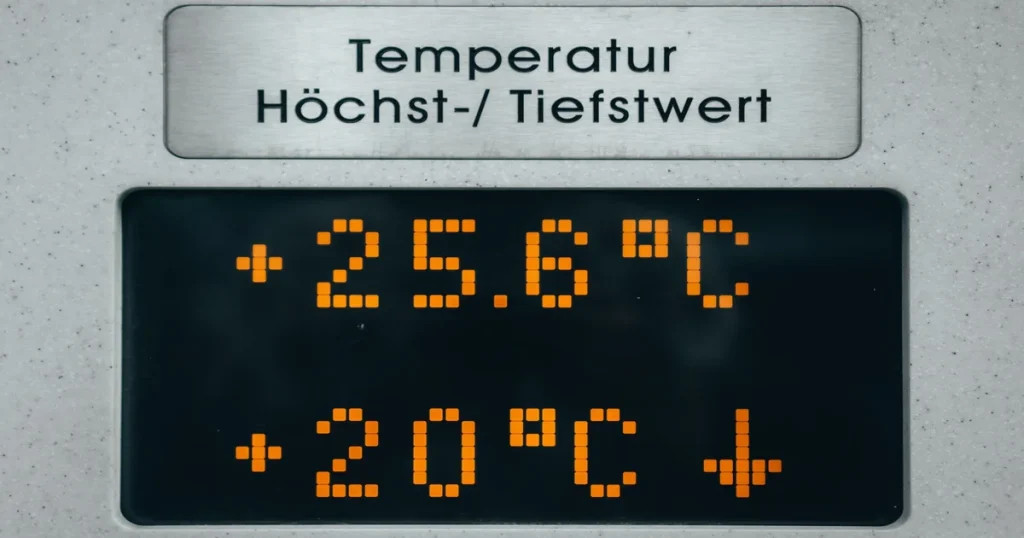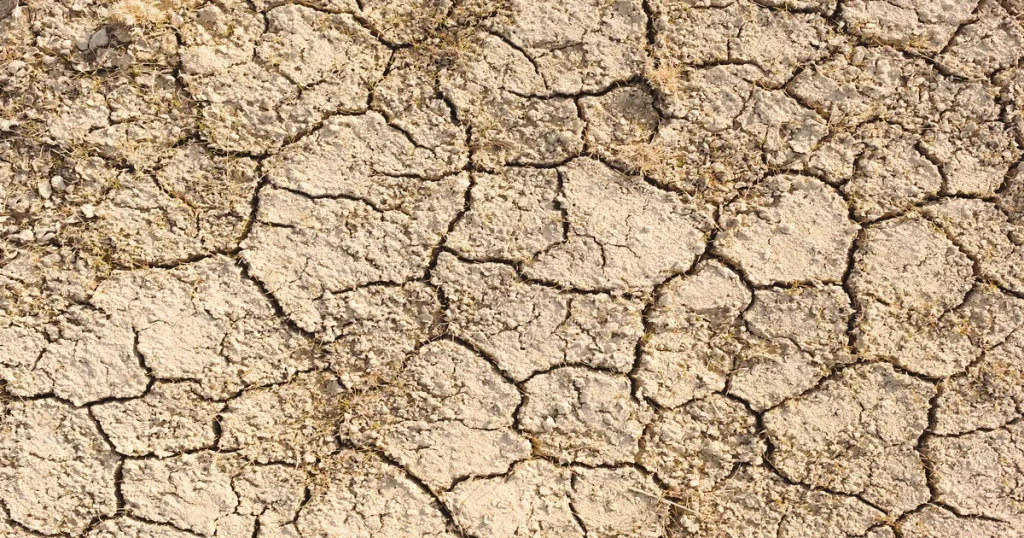If you’ve ever wondered about the temperature trends in Prescott’s climate, you’re not alone. The beautiful city of Prescott in Arizona has a climate that’s both unique and intriguing, drawing the attention of residents, tourists, and scientists.

Understanding these trends is crucial for a variety of sectors, from agriculture to real estate. So, buckle up as we dive into a comprehensive exploration of temperature trends in this amazing city!
Historical Climate Overview of Prescott
To understand the current temperature trends in Prescott, it’s important to have a grasp of its historical climate. Traditionally, Prescott has enjoyed a Mediterranean Semi-arid climate with distinct seasons. Summers have been warm but relatively mild compared to lower elevation areas in Arizona, and winters have typically been chilly with occasional snowfall.
Monsoon seasons have brought relief and much-needed water to the area. This historical climate has shaped the local ecology, agriculture, and even the lifestyle of the residents.
However, as with many places around the globe, Prescott’s historical climate profile is undergoing noticeable changes due to factors like global warming and urbanization. The shifts include milder winters, hotter summers, and variations in precipitation patterns, including during the monsoon season.
These changes have been documented in local climate reports, academic studies, and community observations, all of which contribute to a nuanced understanding of how Prescott’s climate is evolving over time.
Indigenous People and Early Settlements
The first people to truly understand Prescott’s climate were its indigenous inhabitants, mainly the Yavapai and Tonto Apache tribes. They tailored their lifestyles around the climate, making use of its seasonal variations to cultivate crops and sustain their communities.
The indigenous people’s intimate knowledge of the local climate helped them optimize agricultural practices and locate water resources.
The Role of Climate in Prescott’s Development
When the early settlers arrived in the 19th century, the climate was a significant factor in making Prescott an attractive place to live. Mild summers and cool winters presented an ideal setting for farming, leading to the city’s growth as an agricultural hub.
The settlers continued to evolve their agricultural practices, informed by a climate that could be both generous and unforgiving.
Sources of Data
When it comes to understanding temperature trends in Prescott, data is key. Multiple sources provide crucial insights into the changing climate. Government agencies like the National Oceanic and Atmospheric Administration (NOAA) offer long-term climate data that includes temperature, precipitation, and more.
Local weather stations also contribute real-time data that can be valuable for short-term analysis. Academic research, often conducted in collaboration with institutions like Prescott College, adds another layer of depth, providing studies that focus on the local impacts of global climate phenomena.
Finally, community-based initiatives sometimes gather citizen-science data, offering a grassroots perspective on local temperature trends. Each source has its own strengths and limitations, but together they provide a comprehensive understanding that can guide both individual actions and public policy.
Official Meteorological Institutions
When it comes to meteorological data, nothing beats the official records. Organizations like the National Weather Service and the National Centers for Environmental Information offer incredibly detailed and accurate data sets. Their records are indispensable for anyone interested in delving deep into temperature trends and their implications.

The scientific community also plays a vital role in our understanding of Prescott’s climate. Various studies, often published in high-quality journals like Climate Dynamics, give us a broader perspective on temperature trends. These papers don’t just offer raw data; they provide context, helping us understand the factors that influence temperature changes in Prescott.
Modern Climate Classification
In terms of modern climate classification, Prescott falls under the “Mediterranean Semi-arid” category, often designated as “Csa” or “BSk” depending on the system you refer to. This classification generally points to hot, dry summers and mild, wetter winters.
However, as the impacts of climate change become more pronounced, this traditional classification is increasingly coming into question. Rising temperatures, increased variability in rainfall, and shifting seasonal patterns are factors that could eventually lead to a reclassification of Prescott’s climate.
This modern take on climate classification serves as a useful tool for policymakers and residents alike, offering a framework for understanding how climate change is altering the very fundamentals of what we understand as “normal” for Prescott’s weather.
Köppen Climate Classification
In scientific parlance, Prescott falls under the “Csa” category of the Köppen climate classification. In layman’s terms, this translates to a Mediterranean climate that experiences a dry summer. While that might sound like a lot of jargon, it essentially means that Prescott enjoys a moderate climate with distinct seasons, each with its own character.
Beyond the Köppen classification, Prescott has some unique climate attributes. The city experiences what is known as a monsoonal pattern, mostly between July and September. These monsoons bring intense, yet short-lived, bouts of rain. It adds an interesting dimension to Prescott’s climate, offering a seasonal reprieve from the heat.
Yearly Temperature Trends
When you zoom out to look at yearly temperature trends in Prescott, a pattern of gradual warming becomes apparent. Each year, the average temperatures seem to inch upward, which may seem minor in the short term but could have significant implications in the long run.
While fluctuations are normal in any climate data, the upward trajectory aligns with the broader trend of global warming. This rise in yearly averages affects not just the comfort level of residents but also has real-world implications like changing agricultural zones, increased energy consumption, and heightened risks of extreme weather events.
These annual trends serve as a clarion call for action and adaptation to ensure Prescott remains a livable, thriving community in the face of climate change.
Annual Average Temperatures
The long-term data suggests a slight but consistent increase in annual average temperatures in Prescott. This pattern matches broader global trends but also shows local peculiarities. The data doesn’t show a uniform rise year over year, but rather small fluctuations that indicate the complexity of factors at play.
When it comes to extremes, Prescott has had its share of both scorching hot and bitterly cold years. For example, 2017 stands out as one of the hottest years on record, impacting everything from water consumption to energy bills. On the opposite end of the spectrum, the winter of 1993 was notably cold, affecting local wildlife and agricultural schedules.
Seasonal Variability
Seasonal variability is becoming increasingly noticeable in Prescott due to the impacts of climate change. Traditionally, Prescott experiences a range of seasons with well-defined characteristics, but these are undergoing shifts.
Winters are becoming milder, leading to less snowfall, which has implications for local water reservoirs. Springs are arriving earlier, affecting plant blooms and subsequently the animals that depend on them. Summers are extending in both length and intensity, causing concerns about heatwaves, water scarcity, and wildfires.
Even the monsoon season is showing variability, with shifts in onset and duration. All of these seasonal changes add another layer of complexity to the already challenging task of adapting to a changing climate in Prescott.
Spring: Temperature Ranges and Patterns
Spring in Prescott is generally mild, making it a popular season for outdoor activities. Temperature data for the spring months shows a stable pattern, with moderate highs and lows. However, it’s worth noting that the onset of spring has been occurring a bit earlier in recent years, which could have ramifications for local ecosystems.
Summer in Prescott is a season of contrasts. While daytime temperatures can soar, the arrival of the North American monsoon brings periodic thunderstorms that offer a cooling respite. This dual nature of Prescott’s summer makes it both challenging and fascinating, affecting everything from tourism to water management.
Monthly Breakdown
When it comes to a monthly breakdown of temperature trends in Prescott, each month brings its own set of climate nuances that can be tied back to global warming. For instance, the historically cooler months like December and January are now showing signs of milder winters, a change that affects everything from heating bills to local flora and fauna.
On the flip side, traditionally hot months like July and August are getting even hotter, raising concerns about drought conditions, wildfire risks, and increased electricity consumption for cooling.
These monthly variances paint a more detailed picture of how climate change and global warming are manifesting in Prescott, making it essential to take these into account for both short-term planning and long-term sustainability strategies.

Hottest Months
Historical data points towards July and August as the hottest months in Prescott. It’s not just the intensity of the heat that’s noteworthy, but also its duration. Extended hot periods can lead to challenges such as increased water usage and the risk of wildfires.
On the flip side, December and January typically record the lowest temperatures. These months often bring snowfall, transforming Prescott into a winter wonderland. However, the cold also has its challenges, including increased energy consumption for heating and potential disruptions in local transportation.
Effects of Global Warming on Prescott’s Climate
Of course! Global warming is more than just a buzzword when it comes to its impact on Prescott’s climate. The city is experiencing a gradual but consistent rise in its average annual temperatures, aligning with broader global trends.
But it’s not just about hotter summers; changes in seasonal patterns, like altered monsoon seasons and earlier springs, also have far-reaching consequences for the local ecosystem. These shifts create a domino effect, affecting everything from water availability to the timing of plant blooms, which in turn impacts local wildlife.
Understanding the ramifications of global warming at a local level is crucial for both residents and policymakers as they work toward a more sustainable future for Prescott.
Rising Annual Averages
Climate models and historical data suggest that Prescott is experiencing a gradual rise in its average annual temperature. This trend aligns with the broader effects of global warming. While the increase might seem small, even minor changes in average temperature can have substantial effects on the local ecosystem.
Global warming doesn’t just affect annual averages; it can also lead to shifts in seasonal patterns. For example, the duration and intensity of the monsoon season may change, affecting water availability. Early springs could impact plant blooming times, with ripple effects that extend to animal populations that rely on them for food.
The Role of Urbanization in Temperature Trends
Certainly! Urbanization has a noteworthy role in shaping the temperature trends in Prescott. As the city expands, it experiences phenomena like the Urban Heat Island Effect, where developed areas register higher temperatures compared to rural surroundings.
Additionally, the city’s infrastructure, from roads to buildings, contributes to local microclimates that can either exacerbate or mitigate temperature changes. The cumulative effect of urbanization complicates the already challenging issue of rising temperatures, making it an essential factor to consider in any discussion about Prescott’s climate.
The Heat Island Effect
One of the most studied phenomena in urban climatology is the Urban Heat Island Effect. Simply put, built-up areas like Prescott’s downtown can become “heat islands” that are noticeably warmer than surrounding rural areas.
This increase in temperature can exacerbate existing trends, making the city warmer than it would be otherwise.

Infrastructure and Its Impacts
The layout of the city, the materials used in construction, and the concentration of human activity all contribute to Prescott’s microclimate. Highways, buildings, and even parks play a role in shaping temperature trends.
For example, areas with more green spaces often register lower temperatures due to the cooling effects of vegetation.
Socioeconomic Impact of Temperature Trends
Absolutely! The changing temperature trends in Prescott have a tangible socioeconomic impact that extends beyond mere numbers on a thermometer.
From the agricultural sector, where even slight temperature changes can affect crop yields and grape quality in local wineries, to increased energy consumption for cooling systems, the ripple effects are felt across various industries and households.
These changes not only hit the pocketbook but also necessitate a rethinking of long-term planning and investment in both the private and public sectors. Understanding these impacts is the first step toward creating a more resilient and adaptive community.
Impact on Agriculture
Temperature affects the suitability of crops that can be grown in the region. Unpredictable temperature spikes or drops can have a significant impact on yield, which in turn affects the local economy. This is particularly true for Prescott’s wineries, where a subtle change in temperature can have a significant impact on grape quality.
Higher average temperatures often lead to an increase in energy usage, particularly for cooling systems. This not only leads to higher bills for residents but also has implications for the city’s energy infrastructure, which must be equipped to handle the additional load.
Strategies for Climate Resilience
Certainly! When it comes to strategies for climate resilience in the face of changing temperature trends in Prescott, proactive measures are key. Adopting smart water management practices, investing in energy-efficient technologies, and building climate-resilient infrastructure can significantly mitigate the impacts of rising temperatures.
By working together as a community and taking advantage of scientific insights and technological advances, we can not only adapt to these changes but also contribute to a more sustainable future for Prescott.
Water Management
Efficient water management is crucial, especially during hot, dry periods. Prescott has made strides in water conservation, and residents can further contribute by adopting water-saving technologies and practices in their homes and gardens.
In the face of changing temperature trends, building climate-resilient infrastructure is more important than ever. This involves the use of materials and designs that can withstand extreme temperatures, whether hot or cold.
FAQ:
In this section, we will be delving into some of the most common inquiries and curiosities that surround our topic.
What are the hottest and coldest months in Prescott?
Historically, July and August are the hottest months, while December and January are the coldest.
How has global warming affected Prescott’s climate?
Rising annual averages and changes in seasonal patterns, such as the monsoon season, are among the observed impacts.
What can residents do to adapt to changing temperature trends?
Water management and adopting energy-efficient technologies are among the effective strategies for adapting to temperature changes.
Conclusion
Understanding the temperature trends in Prescott’s climate isn’t just an academic exercise; it has real-world implications for everyone from city planners to everyday residents. As we’ve seen, various factors contribute to the city’s unique climate, and understanding these can help us prepare for the future.
While challenges lie ahead due to global warming and urbanization, strategic planning and community efforts can go a long way in making Prescott a resilient and sustainable city for generations to come.



Leave a Comment
You must be logged in to post a comment.